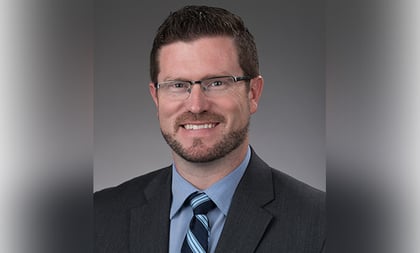(Join ThinkAdvisor’s webcast series on Volatility, May 26-28, for insights and best practices to help navigate the impact of COVID-19. Register Today!)
March and April of this year were two of the most difficult months ever for investors of all kinds, and that’s especially true for those who were heavily invested in any of the sectors hit hardest by the COVID-19 pandemic and accompanying economic downturn.
Jared Snider, a partner and senior wealth advisor at independent firm Exencial Wealth Advisors, which has assets under management of about $2.07 billion and offices in Connecticut, Oklahoma and Texas, shared the cases of two couples and one single client among the 1,000 or so families and organizations that make up his firm’s client base.
One of the two couples are in their mid-50s, were heavily invested in an energy firm, and averted a near economic catastrophe with his help, he said, noting they have been clients of his in the Oklahoma City area for about six years.
The couple’s combined assets grew in 2019 to about $1.6 million and their total liquid net worth, including retirement accounts with the energy firm they both work for, was about $3 million, he noted.
The husband is an executive at that company, and Snider had started discussing some “what-if planning” with the two of them for a while, he recalled. The wife was interested in retiring early, while the husband was about three years away from retiring.
There was, however, one big risk in their portfolio: About 50% of their investable liquid assets were in the company they work for, Snider said.
It’s an investing mistake that company executives often make — one that advisors are in a good position to fix.
(Related: Your Client Has Too Much in One Stock. What Do You Do?)
“We were fortunate in that case in that we began having those proactive conversations around what was really in their best interest,” and they unpacked the “risks associated with [that] concentrated investment,” Snider said, explaining: “We started diversifying that position to a smaller degree [at the] end of 2019 and then moved out of that position” entirely by the end of January.
“They were fortunate,” he noted, to have been able to do that just in time to avoid the huge market downturn in March and U.S. oil prices falling below zero in April.
“To me, that’s an example of when you are proactive, you can have the ability to get out ahead of some of those risks that are unknown,” according to Snider. After all, he said: “No one really saw COVID coming [and] no one was really seeing negative oil prices on the horizon” either.
The couple still had some concerns about what was in their portfolio as they moved out of investing in the one firm they were most familiar with, he said, noting they moved into diversified holdings in multiple securities.
As with most clients, their openness to take action to shift their portfolio strategy came down to a “critical life event” — in their case both of them looking to retire and the husband “not wanting to have so much of his life’s work and resources tied up in one company,” Snider explained.









 May 19, 2020 at 11:55 AM
May 19, 2020 at 11:55 AM











